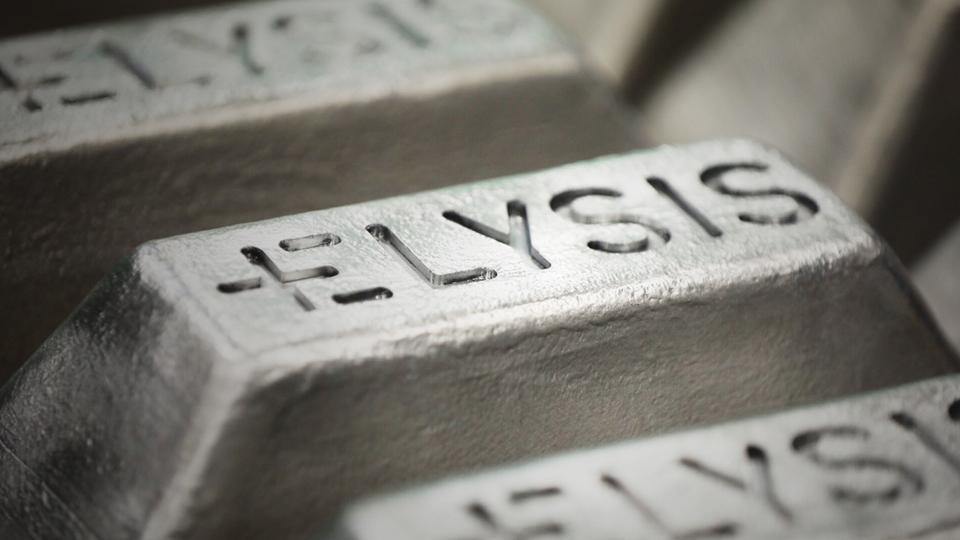By Andrea Svendsen, Managing Editor.
Elysis, the joint venture formed by Alcoa and Rio Tinto, is making great strides toward the commercialization of its proprietary inert anode technology, which is said to be able to produce aluminum without any direct greenhouse gas (GHG) emissions. This would help to meet the primary aluminum industry’s need to reduce its carbon footprint. If fully implemented at existing smelters across Canada, the technology could eliminate the equivalent of 6.5 million tonnes of GHGs. In addition, it is expected to increase production by 15% and also to reduce operating costs by 15%, when compared to the traditional smelting process.
Technology Development
The Elysis™ inert anode technology is the realization of a long term dream of the aluminum industry, which has been working on its development since electrolysis was first invented. The concept itself is straightforward. In a traditional electrolysis cell, the alumina (essentially a combination of aluminum and oxygen) is placed in a cell with an electrode and carbon anode, where the process splits the aluminum and oxygen. The aluminum settles in the bottom of the cell, and the oxygen binds with the carbon in the anode, creating CO2 emissions. With inert anode technology, the carbon element is removed. The absence of carbon means that when the aluminum is separated from the oxygen, only oxygen is emitted from the cell.

Despite the simplicity of the concept, realizing inert anode technology is actually very complex. “Literally every aluminum producer has taken a stab at this, investing incredible sums of money over many decades,” said Vincent Christ (Figure 1), CEO of Elysis. “What this tells you is that making inert anodes viable is incredibly difficult, but ultimately the benefits are immense and worth the effort. Not only do inert anodes solve environmental problems, but they also have a major impact on reducing operation costs. Which is why, inert anode technology tends to be referred to as the holy grail of the aluminum industry.”
As Christ points out, the barrier to entry is huge, a fact that is influenced by a number of factors. The first is finding the right materials for the inert anode, so that they provide efficient production with a high metal quality. “One of the ways to know whether you’re on track or not is measuring quality of the metal that you produce,” noted Christ. “A number of inert anode solutions have come along over the years. While these have shown some benefits, the inert anodes were often revealed to be not all that inert. As a result, the anode would pollute the metal, requiring additional purification steps to get it up to specification—which fails to solve the business case for inert anodes.”
Once the inert anode has been successfully developed, a number of other concerns come into play, including the manufacturing process for producing the anodes and a redesign of the electrolysis cell. While the inputs (alumina and an anode) are the same, the electrolysis process with inert anodes is fundamentally different. Therefore, the cell needs to be designed to meet the specific requirements of the inert anode and achieve stable cell operation. With the development of a new pot cell design, the ancillary equipment for the handling of materials and management of the operation also needs to be redeveloped.
“Addressing these challenges requires specific competencies, notably a combination of deep science and the ability to transform the results of that scientific work into a commercial product or industrial solution,” said Christ. “This is exactly what has happened with the Elysis joint venture.”
Both Alcoa and Rio Tinto have their own R&D capabilities. For more than two decades, Alcoa had been developing an inert anode process at the Alcoa Technical Center outside of Pittsburgh, PA. Meanwhile, Rio Tinto has a long history of developing next-generation cell technologies, which have been utilized in smelters around the world. With investment support from the government of Canada, the government of Quebec, Alcoa, Rio Tinto, and Apple, which had facilitated the collaboration between the two aluminum companies, Elysis came into being in 2018. Since its launch, Elysis has blended these competencies in order to develop its breakthrough inert anode technology.
Elysis successfully produced its first commercial batch of aluminum using inert anodes at the Alcoa Technical Center in late 2019 (Figure 2), proving the sustainability, stable performance, and a strong business case for the technology. This first batch of metal was purchased by Apple. The sale of this first metal demonstrated the market potential for low-carbon aluminum, considering the growing demand for environmentally sustainable products.

Shortly after producing its first metal, Elysis began work on its Industrial Research and Development Center and completed its construction in December 2020. Located at Rio Tinto’s Complexe Jonquière in Saguenay-Lac-Saint-Jean, Québec, Canada, the center provides a small-scale industrial demonstration of all aspects of the inert anode process—from manufacturing the anode assemblies to testing the electrolytic cells and the reliability of the new ancillary equipment. Working closely with Alcoa and Rio Tinto’s technology teams, Elysis has been able to scale up the size of the cells and adapt their design to an industrial environment.
In addition to testing the inert anodes and their cell technology, one of the key objectives of the Industrial Research and Development Center has been examining the quality of the metal produced. “One of the major breakthroughs in our scale-up program has been our ability to master metal purity at every step,” said Christ. “We have been able to achieve a metal purity in line with the LME standard of around 99.7% purity also known as P1020.”
Pathway to Commercialization
Elysis is now in the process of constructing and installing its first commercial-scale prototype cells based on inert anode technology. Located within an existing potline at Rio Tinto’s Alma smelter in Saguenay-Lac-Saint-Jean, the commercial cells will operate with an electric current of 450 kA, which is on par with the technologies used in large modern aluminum smelters around the world.
The cells are being designed for implementation in greenfield smelters, as well as for retrofitting of existing smelters with a drop in replacement cell. Christ notes that Elysis has particularly been focused on making retrofits viable. “The idea of simply taking the carbon anodes out of the cell and replacing them with inert anodes is a pipe dream,” he explained. “Because the processes are different, we have to remove the entire superstructure and lining of the cell and replace it with a new inert anode cell. This kind of retrofit allows for the reuse of the existing building, concrete, infrastructure, and so forth, which saves cost over a greenfield expansion.”
Another element necessary for commercializing the Elysis inert anode technology is scaling up the manufacturing of inert anodes and cathodes for implementation in the commercial cells. In 2022, the company will design and engineer a new facility for the production of these materials. “Our plan for the anode and cathode manufacturing process is to make it as carbon neutral as possible,” explained Christ. “We are very mindful of the fact that we do not want to just shift the environmental problem elsewhere. We are still finalizing the work, but essentially the thermal process for the anodes can use electricity, so we plan to use renewable energy.”
With construction underway, Elysis plans to complete its commercial-scale demonstration project in 2023. Shortly after, in 2024, the technology will be available for installation, starting with smelters in Quebec and then followed by global licensing agreements. Once the first cells start being installed, Elysis plans to continue to work on its inert anode technology in order to be able to develop and produce even larger cells.
“We have had an ecstatic 2021,” said Christ. “We’ve made a major step forward with an industrial design that is producing high quality metal with a low-carbon footprint—and in parallel, have started the next step toward commercialization. We’re on a path to successfully demonstrate to the industry that inert anodes are a real solution, which gives our team a huge amount of energy and inspiration. I’m very proud of what we’ve achieved.”
Editor’s Note: This article first appeared in the February 2022 issue of Light Metal Age. To receive the current issue, please subscribe.
